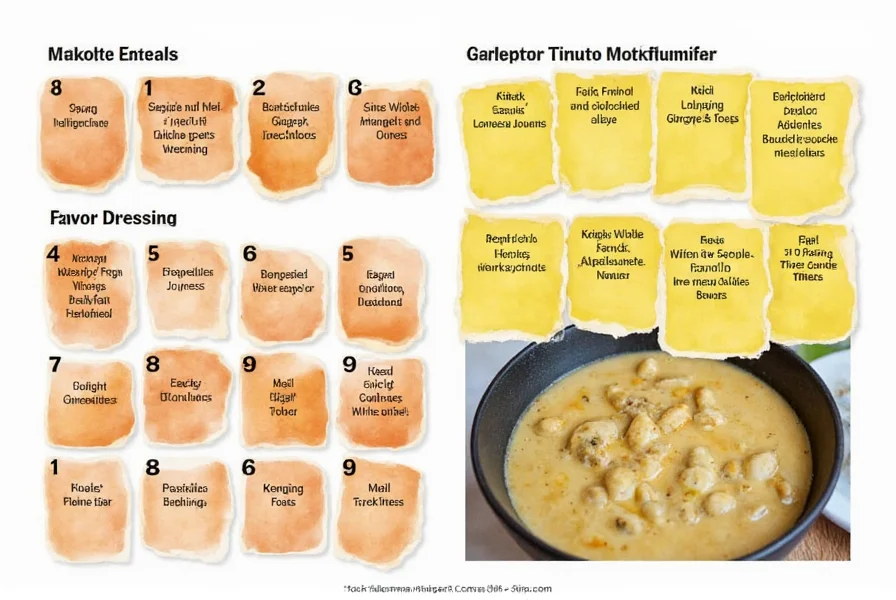Makoto dressing ginger is a Japanese-style salad dressing featuring ginger as a primary flavor component, known for its balanced sweet-savory profile with a distinctive ginger kick that enhances both traditional and fusion cuisine. This authentic Japanese ginger dressing typically combines fresh ginger, rice vinegar, soy sauce, sesame oil, and a touch of sweetness to create a versatile condiment that elevates salads, marinades, and dipping sauces.
When exploring authentic Japanese ginger dressing options, Makoto stands out as a popular choice among culinary enthusiasts seeking genuine Asian flavors. This distinctive dressing brings the vibrant essence of Japanese cuisine to home cooking with its carefully balanced formula that respects traditional preparation methods while remaining accessible for modern kitchens.
Understanding Makoto Dressing Ginger's Culinary Profile
Makoto dressing ginger represents a category of Japanese dressings known as “wafu” (Japanese-style Western dressings), which have become integral to contemporary Japanese cuisine. Unlike Western dressings that often rely on dairy or heavy oils, Japanese ginger dressings like Makoto feature a light, vinegar-based foundation that allows the ginger's aromatic qualities to shine through without overwhelming other ingredients.
The distinctive flavor profile of Makoto ginger dressing comes from its precise ingredient ratio. Freshly grated ginger provides the signature zing, while rice vinegar offers mild acidity. Soy sauce contributes umami depth, mirin adds subtle sweetness, and sesame oil provides nutty complexity. This harmonious blend creates a dressing that complements rather than dominates the ingredients it accompanies.
| Key Ingredient | Function in Dressing | Traditional Proportion |
|---|---|---|
| Fresh Ginger | Primary flavor, aromatic heat | 10-15% |
| Rice Vinegar | Acidity, brightness | 25-30% |
| Soy Sauce | Umami, saltiness | 15-20% |
| Mirin | Subtle sweetness | 10-15% |
| Sesame Oil | Nutty aroma, complexity | 5-8% |
Practical Applications in Everyday Cooking
Understanding how to use ginger dressing effectively can transform your culinary creations. Makoto dressing ginger serves multiple purposes beyond simple salad preparation. For optimal results when using this authentic Japanese ginger dressing, consider these applications:
- Salad foundation: Toss with mixed greens, cucumber, and wakame for a traditional sunomono-style salad
- Marinade enhancer: Combine with additional ginger for chicken or fish preparations (allow 30-60 minutes marinating time)
- Dipping sauce base: Thin with additional rice vinegar for gyoza or spring rolls
- Grain bowl dressing: Drizzle over rice bowls with roasted vegetables and protein
- Sauce modifier: Blend with mayonnaise for a Japanese-inspired creamy dressing

Comparing Japanese Dressing Varieties
While Western dressings often feature oil-heavy emulsions, traditional Japanese dressings like Makoto ginger dressing maintain a lighter, vinegar-forward profile. This difference reflects fundamental culinary philosophies: Japanese cuisine emphasizes showcasing ingredient quality rather than masking it with heavy sauces.
When evaluating ginger dressing for Asian cuisine applications, consider how Makoto compares to similar products:
- Ponzu-based dressings: Feature citrus notes rather than ginger prominence
- Sesame dressings: Have stronger nutty profiles with less ginger presence
- Miso dressings: Offer fermented depth but lack the bright ginger notes
- Commercial Western ginger dressings: Often contain dairy or sugar-heavy formulations unlike authentic Japanese versions
Storage and Shelf Life Considerations
Proper storage significantly impacts the quality of ginger dressing for Asian cuisine. Authentic Japanese dressings like Makoto typically contain natural ingredients without excessive preservatives. For optimal freshness:
- Refrigerate after opening (even if unopened, cool storage preserves flavor)
- Use within 4-6 weeks for peak flavor (check specific product recommendations)
- Shake well before each use as natural separation occurs
- Store away from light to prevent flavor degradation
Homemade versions of this healthy Japanese dressing option will have shorter shelf life (approximately 2 weeks) due to the absence of commercial preservatives. The fresh ginger content particularly benefits from cool, dark storage conditions.
Creative Recipe Integration
Expanding beyond basic salad applications, Makoto dressing ginger offers versatility in numerous culinary contexts. Consider these recipe ideas featuring ginger dressing that highlight its authentic Japanese characteristics:
- Ginger-dressed cucumber salad: Thinly sliced cucumbers marinated 15 minutes in Makoto dressing with toasted sesame seeds
- Asian slaw with protein: Combine shredded cabbage, carrots, and edamame with dressing, topped with grilled chicken
- Rice bowl dressing: Mix with additional rice vinegar for drizzling over donburi bowls
- Marinated tofu: Press firm tofu, cut into cubes, and marinate 30 minutes before pan-frying
- Dipping sauce variation: Blend with chili oil for dumpling dipping sauce

Finding Authentic Japanese Dressings
When searching for genuine Japanese dressings like Makoto ginger dressing, look for specific markers of authenticity. Quality Japanese dressings typically list ginger first among spices, use rice vinegar rather than distilled vinegar, and avoid artificial colors or flavors. The ingredient list should reflect traditional Japanese culinary principles rather than Westernized adaptations.
Asian grocery stores, both physical and online, often carry authentic options that maintain traditional flavor profiles. When evaluating ginger dressing ingredients, check for freshly grated ginger rather than ginger powder or artificial flavorings for the most authentic experience.
Frequently Asked Questions
What makes Makoto dressing ginger different from regular ginger dressings?
Makoto dressing ginger follows authentic Japanese preparation methods with a precise balance of fresh ginger, rice vinegar, soy sauce, and subtle sweetness. Unlike many Western-style ginger dressings that use heavy oils or dairy bases, Makoto maintains a light, vinegar-forward profile that showcases the ginger flavor without overwhelming other ingredients, making it ideal for traditional Japanese cuisine applications.
Can Makoto dressing ginger be used as a marinade?
Yes, Makoto dressing ginger works exceptionally well as a marinade for proteins like chicken, fish, and tofu. The acidity from the rice vinegar helps tenderize while the ginger adds distinctive flavor. For best results, marinate proteins for 30-60 minutes (not longer, as the acidity can begin to “cook” delicate proteins). This application showcases how ginger dressing for Asian cuisine can enhance multiple cooking techniques beyond salad preparation.
Is Makoto dressing ginger considered a healthy Japanese dressing option?
Makoto dressing ginger generally qualifies as a healthier option compared to many Western dressings because it's oil-based rather than dairy-based, contains no artificial preservatives in authentic versions, and uses natural ginger rather than artificial flavors. The typical formulation provides flavor without excessive calories, making it a preferred choice for those seeking healthy Japanese dressing options that don't compromise on authentic taste.
How long does opened Makoto dressing ginger last in the refrigerator?
Properly stored in the refrigerator after opening, authentic Japanese ginger dressing like Makoto typically maintains optimal flavor for 4-6 weeks. Always check the specific product's expiration date and look for signs of spoilage such as separation that doesn't remix when shaken, off odors, or mold. For homemade versions of this ginger dressing ingredients list, refrigeration is essential and shelf life reduces to approximately 2 weeks.
Can I make my own version of Makoto dressing ginger at home?
Absolutely. Creating your own version of authentic Japanese ginger dressing at home allows for customization. Combine 1/4 cup rice vinegar, 3 tablespoons soy sauce, 2 tablespoons mirin, 1 tablespoon freshly grated ginger, 1 teaspoon sesame oil, and 1 teaspoon sugar. Whisk until sugar dissolves. This homemade alternative to commercial Makoto dressing ginger lets you control ingredient quality and adjust ginger intensity to your preference while maintaining traditional Japanese dressing characteristics.











 浙公网安备
33010002000092号
浙公网安备
33010002000092号 浙B2-20120091-4
浙B2-20120091-4